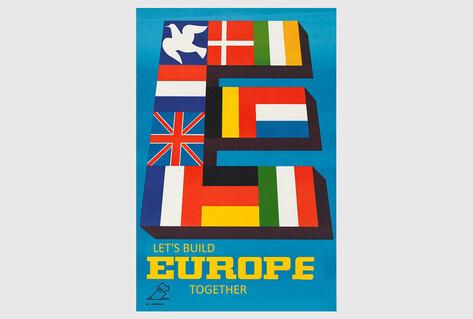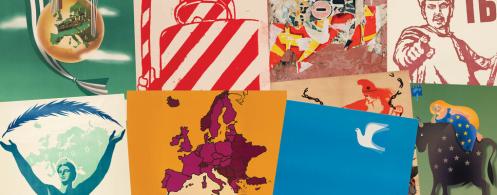
Posters – promotion, propaganda and protest
30 April 2022 - 13 November 2022
The illustrated poster was born in Europe in the late 19th century, reflecting an increasingly commercialised world with conflicting political ideologies. Posters are ephemeral, produced for a specific moment, yet many elements are recycled and resonate in cultural memory today. From the propaganda of the World Wars and the Cold War to the explosion of cultural exchange, tourism and the emergence of multi-voiced social movements after the Second World War, complex layers of European division and unity are revealed through a selection of posters from the collection of the House of European History. They reflect the development and transformation of the public sphere in European cities.
Public opening - 30 April 2022 - Join us at the museum for a rich programme of activities: a drawing performance by artist, writer and cartoonist Dan Perjovschi, a creative workshop where visitors can design their own poster on a topic they feel is important for Europe, and guided tours in the galleries of the temporary exhibition!
Participation in a workshop: ‘Walls talk... and you, what do you have to say?’ will initiate primary schools into the milestones of European History. The question whether or not you can trust the image on a poster will also be addressed, equipping students with keys to analyse images from the past. Students from secondary schools will have the possibility to learn about European History via posters presenting human rights, migration, European election, conflict, and also cultural and sport events. Students will be asked to time travel to create their own posters on a topic that they identify as important for the public sphere and present the outcome of their discussion to the other students in the group. (EN/FR/NL)
Exhibition content
The Introduction describes the role of posters in European public life and invites the visitors to reflect on various approaches to the continent, both as a geographical area and as a concept.
Mock-up of exhibition entrance area. ©-Studio Harm Rensink
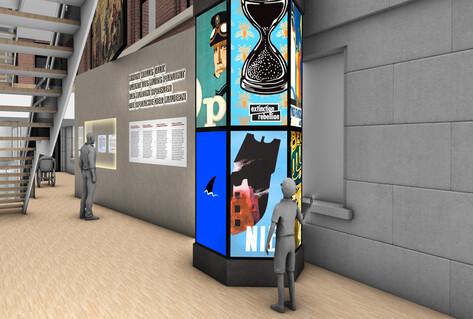
The section Turmoil and unity traces the role of posters as agents and witnesses of the ideological encounters and confrontations that have shaped European history since the First World War. Its title is a reference to the antagonisms and tensions underlying the ideological struggles and armed conflicts in Europe throughout the 20th century, but conversely, it also articulates the will to cooperate and advance through peaceful and mutual efforts.
Mock-up of Turmoil and unity section. ©-Studio Harm Rensink
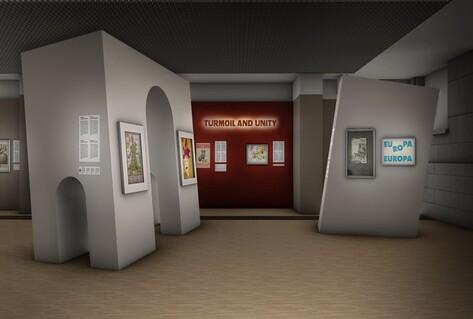
The next section, Barriers and connections, examines the dual nature of borders, the fact that they can be both physical and conceptual, constructed or physical barriers. Europe is central to ongoing debates over migration and human rights on the one hand and national sovereignty and protectionism on the other. It is seen as both a haven of human rights and a cruel fortress. Cultural events, sport, festivals and fairs aim to mirror an ideal society, helping to define the social, cultural, economic and private aspects of being European.
Mock-up of Barriers and connections section. ©-Studio Harm Rensink
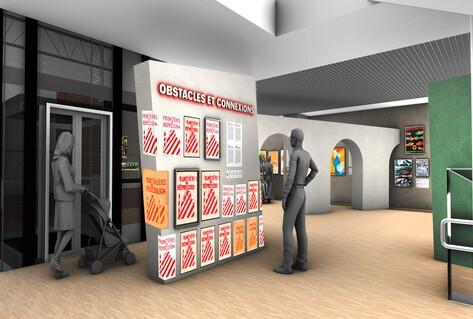
Activism and protest examines posters of revolt as ideal vehicles for expressing political demands and as valuable witnesses of the struggle for human rights. The complex juxtaposition of increasingly differentiated political demands, conflicts of interest and ideas of equity in post-war Europe is the result of the pluralism and polarisation that exists in modern societies.
Mock-up of Activism and protest section. ©-Studio Harm Rensink
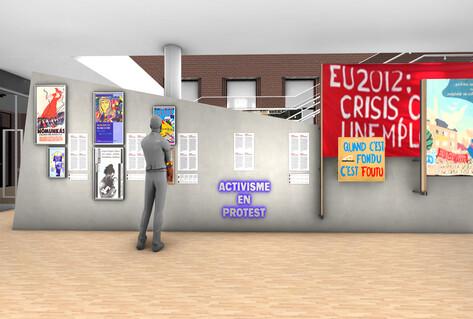
The last section of the exhibition is entitled After the poster? and questions the role of the posters now and in the future. Even with the digital advances of the 21st century, posters are still used to influence our behaviour and allegiances. This section includes artworks, because art often encourages us to reflect about our existence and our environment.
Mock-up of After the poster? section. ©-Studio Harm Rensink
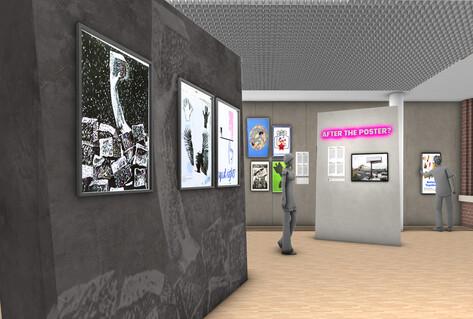
Introduction
Europa Regina
Johannes Putsch (1516–1542)
Tyrol, Holy Roman Empire, 1534
Museum Retz, Austria
Europa Regina
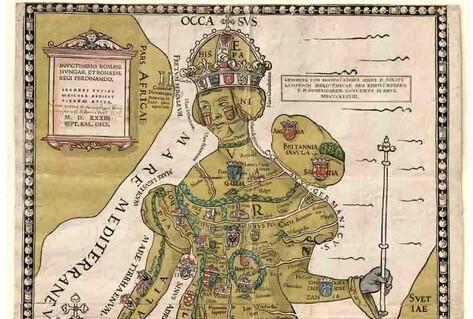
Europa!
Carmen Moreno (b. 1964)
Poster for the European Parliament elections
Spain/Netherlands, 1999
Europa!
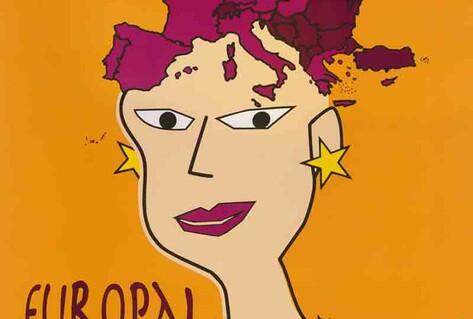
Istanbul bye bye!
Uwe Loesch (b. 1943)
Germany, 2006
Istanbul bye bye!
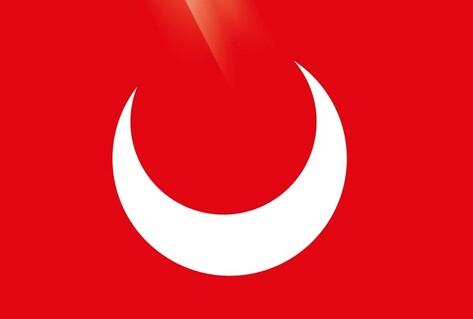
Turmoil and unity
Britons [Lord Kitchener] wants You. Join Your Country’s Army!
Alfred Leete (1882–1933)
United Kingdom, 1914
Replica
Imperial War Museum, London, United Kingdom
Britons [Lord Kitchener] wants You. Join Your Country’s Army!
![Britons [Lord Kitchener] wants You. Join Your Country’s Army!](/sites/default/files/styles/oe_bootstrap_theme_medium_no_crop/public/2023-08/2_britons.jpg?itok=65Wd-7zt)
Dan Mladosti
(Youth Day)
Novi kolektivizem (NK)
Slovenian Socialist Republic, Yugoslavia, 1987
Dan Mladosti
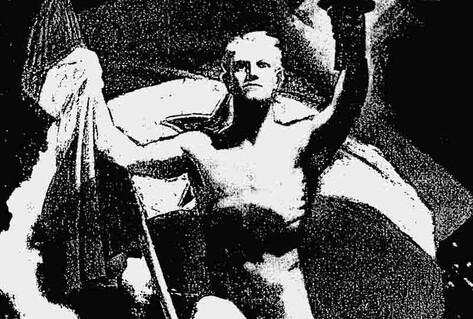
Einheit Europas so oder so
(European unity one way or the other)
Pro-European, anti-communist poster.
signed with the initials M G
West Germany, circa 1950
Einheit Europas so oder so
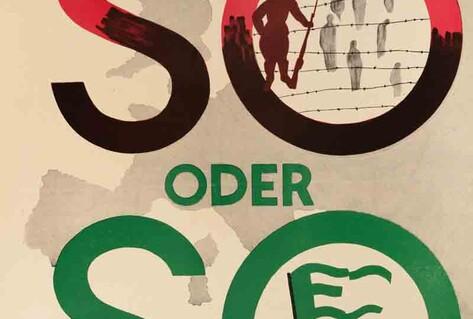
Europe – All Our Colours to the Mast
Reyn Dirksen (1924–1999)
First prize of the competition
Netherlands, 1950
Europe – All Our Colours to the Mast
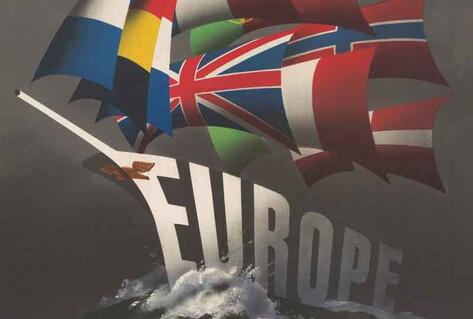
Rakennetaan Eurooppaa ydhessä
(Building Europe Together)
Designer: FreeForm
Poster celebrating 40 years since the Treaty of Rome.
Belgium, 1997
Rakennetaan Eurooppaa ydhessä
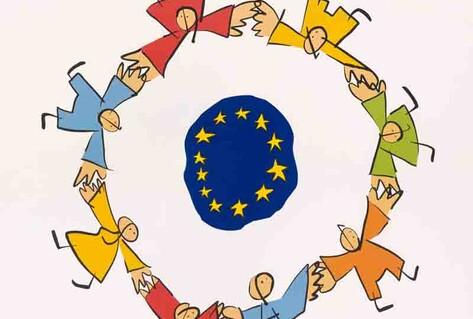
Barriers and connection
Frontières = Répression
(Borders = Repression)
Atelier populaire
Paris, France, May 1968
Frontières = Répression
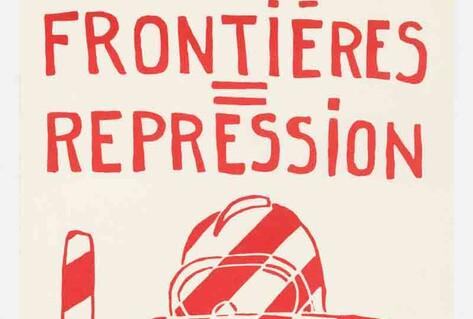
Trans Europ Express verbindet 70 Städte Europas
(Trans Europ Express connects 70 cities in Europe)
Jan Rodrigo (1921–2013)
Netherlands, 1957
Trans Europ Express verbindet 70 Städte Europas

Le- és felszállásnál legyünk körültekintőek
(Be careful when getting on and off the train)
Hungary, 1964
Le- és felszállásnál legyünk körültekintőek
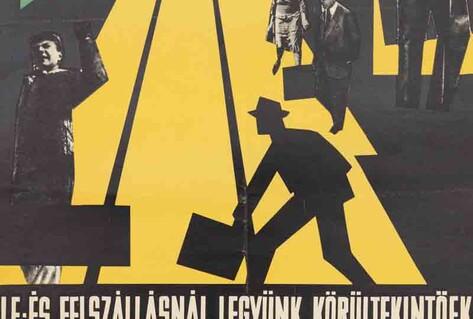
Europe. Fly Irish Air lines
Piet Sluis (1929–2008)
Ireland, circa 1955
Europe. Fly Irish Air lines
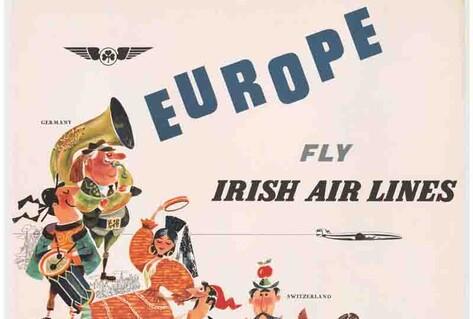
Olympic Games, Berlin 1936
Franz Theodor Würbel (1858 –1943)
Germany, 1936
Olympic Games, Berlin 1936
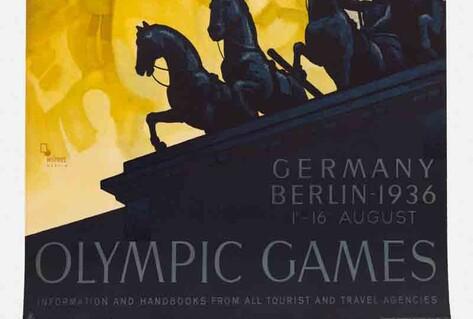
Activism and protest
Madonna and Christ with rainbow halos
Elżbieta Podleśna (b. 1968)
Poland, 2019
Madonna and Christ with rainbow halos
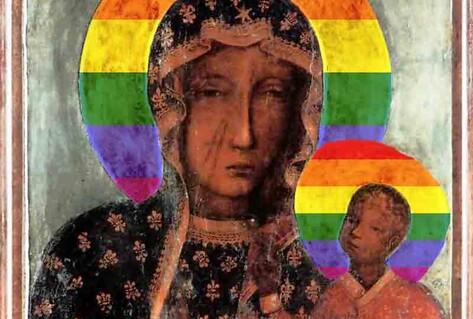
Je suis Charlie
(I am Charlie)
Joachim Roncin (b. 1976)
France, 2015
Je suis Charlie
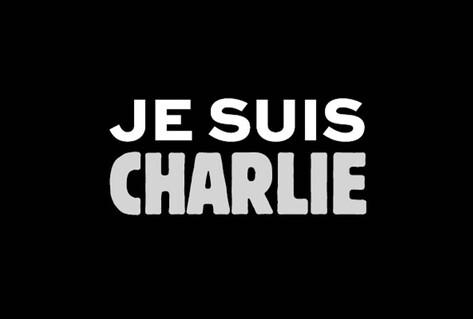
Voice of democracy in danger!
Doğan Arslan
Turkey/Slovakia, 2018
Voice of democracy in danger!
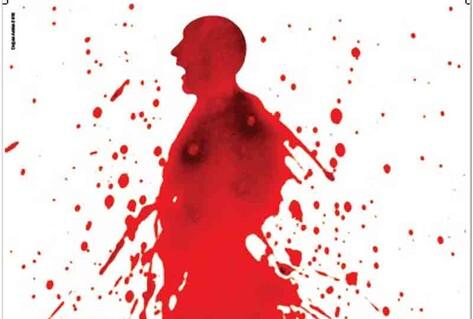
Cardiogram [Seismograph]
Czeslaw Bielecki (b. 1948)
Poland, 1980
Europejskie Centrum Solidarności, Gdańsk, Poland
Cardiogram [Seismograph]
![Cardiogram [Seismograph]](/sites/default/files/styles/oe_bootstrap_theme_medium_no_crop/public/2023-08/4_cardiogram.jpg?itok=SqQ7sxEH)
Frieden ist möglich!
(Peace is possible!)
Wolfgang Janisch
East Germany,1988
Stiftung Haus der Geschichte, Zeitgeschichtliches Forum Leipzig, Germany
Frieden ist möglich!
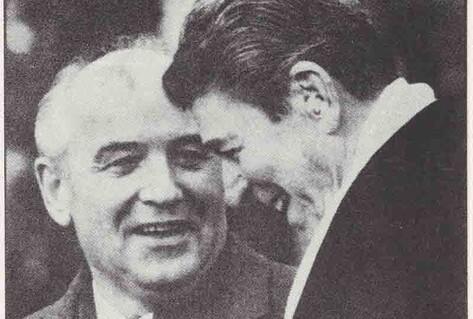
After the poster?
Interview with Rab Harling about photo series "Abandon your Dreams". Filmed by Shosho for the House of European temporary exhibition "When Walls Talk! Posters – promotion, propaganda and protest".
Rab Harling in London surrounded by buildings
Commercial Road
Rab Harling (b. 1972)
Great Britain, 2009–2010/2022
Abandon Your Dreams - Great West Road 2
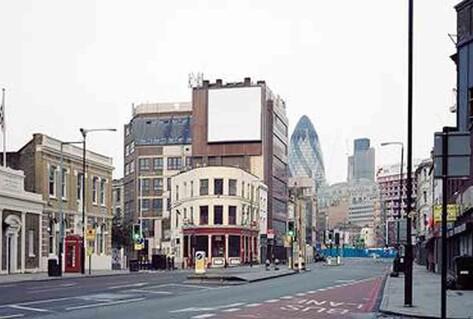
Abandon Your Dreams
Rab Harling (b. 1972)
Great Britain, 2009–2010/2022
Abandon Your Dreams
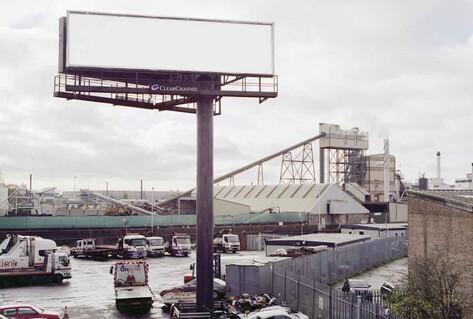
Abandon Your Dreams
Rab Harling (b. 1972)
Great Britain, 2009–2010/2022
Abandon Your Dreams
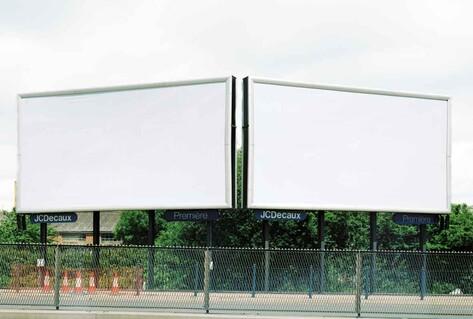
Rue du fort Bourbon, Luxembourg, 1998
(Fort Bourbon Street, Luxembourg, 1998)
Jacques Villeglé (b. 1926)
Musées de la Ville de Luxembourg
Rue du fort Bourbon, Luxembourg, 1998
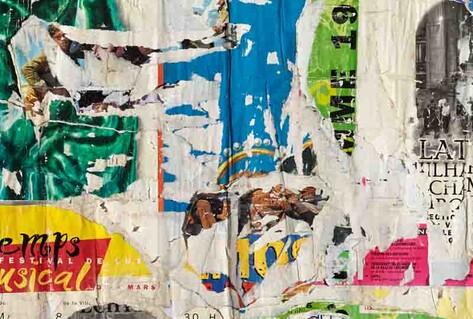
Learning offer
Posters function as vehicles to inform, but also educate and even manipulate. They reflect the societal struggles for ideas, power, or wealth and they give a powerful voice to citizens on different social, cultural or political issues. In other words, posters can be agents and witnesses of ideological confrontations in the European history, reflecting the situations of the moment and providing us with a rich record of European stories. The topic is therefore an appropriate learning tool for citizens and younger students alike, to strengthen media literacy, and help explore the historical evolution of the ‘public sphere’ in Europe.
Image from poster design station
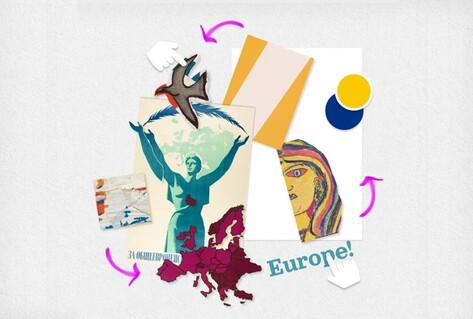
The learning programme for When Walls Talk aims to provide meaningful audience engagement and strong learning components to help visitors to contextualise these posters. From the idea of the poster to its impact, what was the historical context of the poster? Who produced it? What was its intended audience? The learning programme will be a space for audiences to utilise their multiplicity of learning styles and perspectives. In terms of specific interactive areas, the exhibition will feature:
Image from poster design station
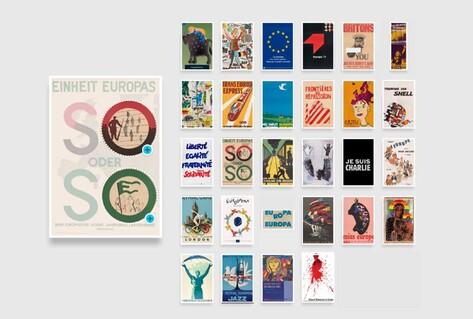
The interactive ‘Let’s design a poster together!’ invites the visitors to create their own poster using visual fragments from some posters in the exhibition, creating original slogans and following design rules in order to obtain a strong poster, ready to be shown on a screen in the exhibition.
Image from poster design station
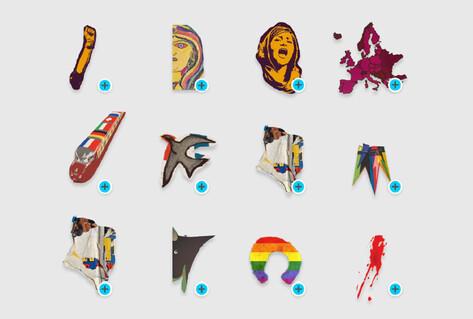
‘Finding links!’ – Visitors are challenged to contextualise posters that they just discovered in the exhibition. They are asked to link the poster with its correct historical image representing the context, the producer or the intended audience, a playful journey in the shoes of an historian.
Diploma from "Finding links" activity

‘Walls talk... and you, what do you have to say?’ will initiate primary schools into the milestones of European History. The question whether or not you can trust the image on a poster will also be addressed, equipping students with keys to analyse images from the past. Students from secondary schools will have the possibility to learn about European History via posters presenting human rights, migration, European election, conflict, and also cultural and sport events. Students will be asked to time travel to create their own posters on a topic that they identify as important for the public sphere and present the outcome of their discussion to the other students in the group.
School guided tours - poster designed by young student during preparatory workshop.
